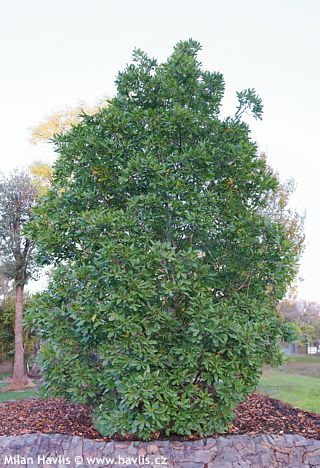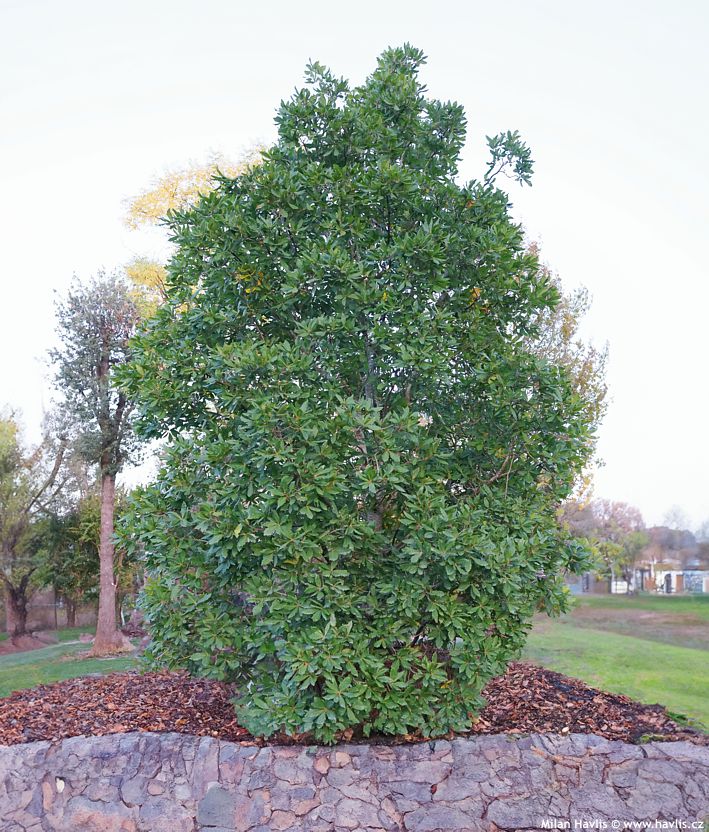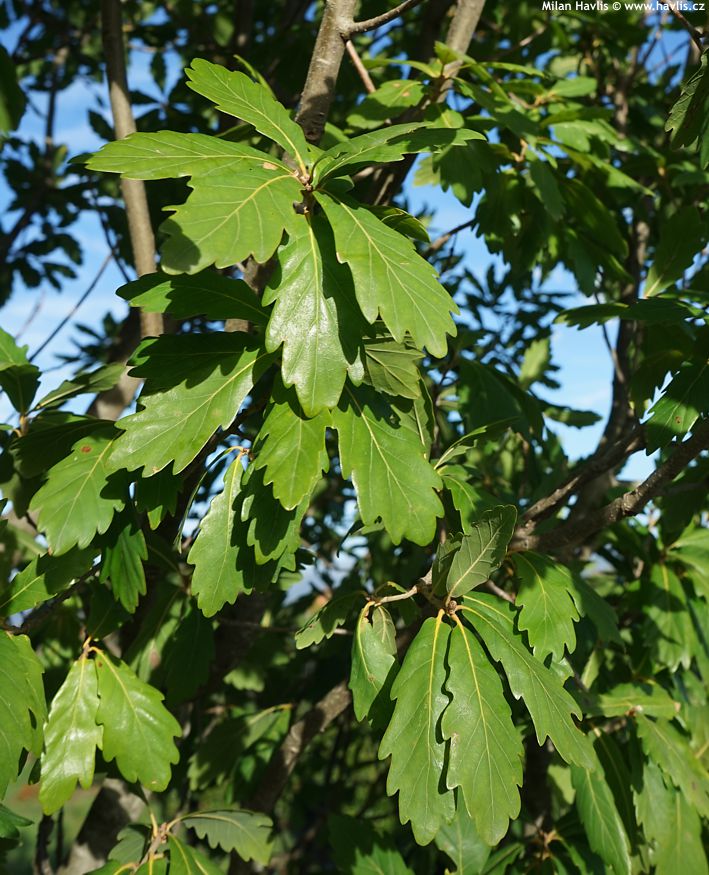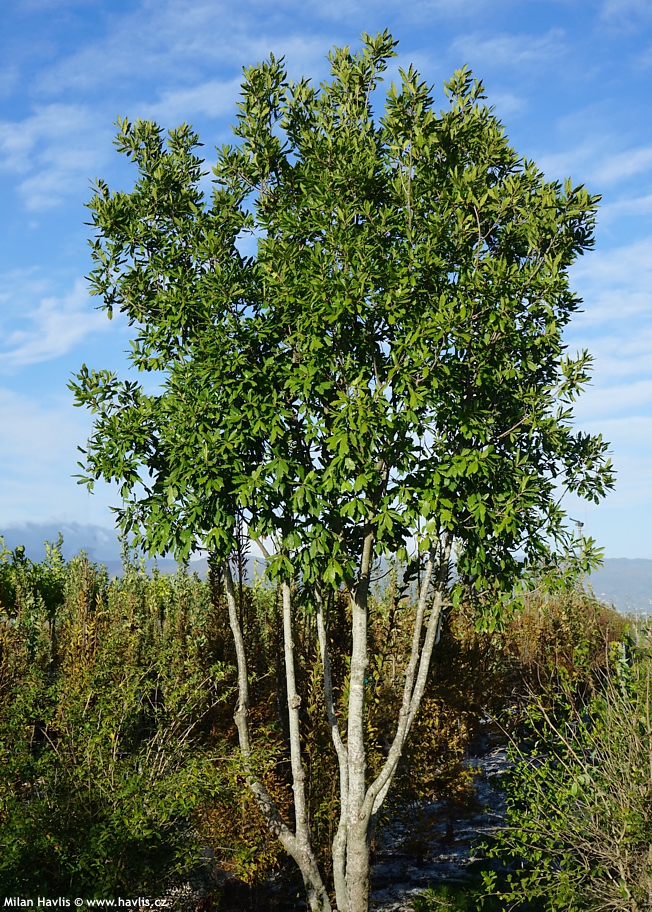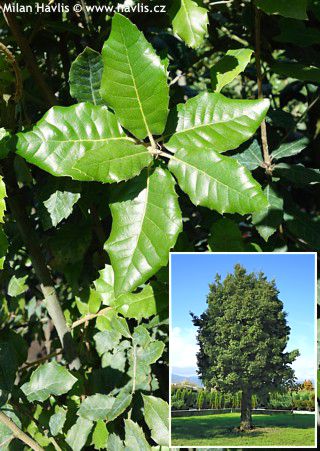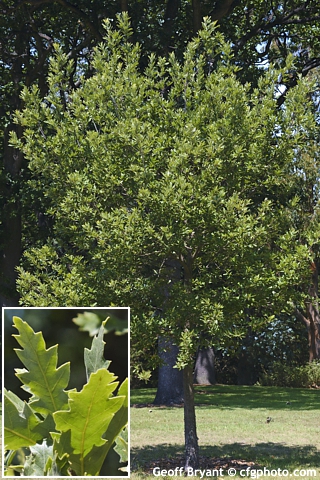Quercus x turneri 'PSEUDOTURNERI' Turners oak


Quercus
We are specialists in evergreen plants and we offer the widest possible range of quality species. Did you know that there are evergreen oaks? Turner’s oak is one example, probably the only oak suitable for our climate (zone 6). It is a cross between quercus ilex and quercus robur.
Pseudoturneri is a later variety of Turners oak. Its leaves are very similar to common oak, mid green, shallowly lobed and partly glossy. Compared to its hybrid parent it is a little smaller, hardier, and holds its leaves more reliably over the winter. Still, some leaves may fall down at the end of winter to be substituted with new ones. The original hybrid often lost majority of leaves already when the first major frosts came.
This variety is commonly cultivated as a large shrub rather than a tree. Naturally it is spreading with a rounded crown but thanks to its slower growth it can easily be kept smaller by pruning. Spring pruning will encourage new growth, summer pruning in mid to end July is recommended for shaping.
Oaks like deep, fertile, moist soil. Well established plants withstand water-logging. It is partly lime-tolerant. If it is situated in a sheltered location it will remain evergreen all winter. Provide extra watering in frost-free periods in winter to prevent from drying out before the ground gets frozen. Hardy to about -24°C (USDA zone 6).
Last update 04-01-2009.
Goods are shipped all over Europe. For Russia and U.K. and for further details please read about SHIPPING OPTIONS HERE.
Are you interested in a serious discount for orders NOV-FEB? Check your options here.
THE PRICES INCLUDE VAT of 15%. For quick conversion you can use 1 CZK = approx. 0.04 EUR
- STANDARD QUALITY - Plants of this group are 1st class quality with number of branches and overall density adequate to their size and age, considering they were container grown.
- DE LUXE QUALITY - This label guarantees a luxurious quality of manually selected plants that, compared to their height and age, are exceptionally dense and beautiful.
- EXTRA - These plants are usually mature and bigger specimens with exceptional overall appearance.
- STANDARD (as described in the plant form) means a tree with a trunk of 190-210 cm and a crown at the top, unless specified differently. The commercial size for trees is their girth measured in the height of 1m from ground.
- HOBBY - These plants are of the same quality as our standard-quality plants but younger and therefore cheaper.
- SHRUB - a woody plant with branches growing bushy from the ground level.
- HALF-STANDARD or MINI-STANDARD - a small tree with shorter trunk, its size is usually specified.
- FEATHERED - These are trees with branches growing already from the base of the trunk and up along the stem.
- GRASSES and PERENNIALS - Sizes given usually read the diameter of the pot or the clump, as specified.

































